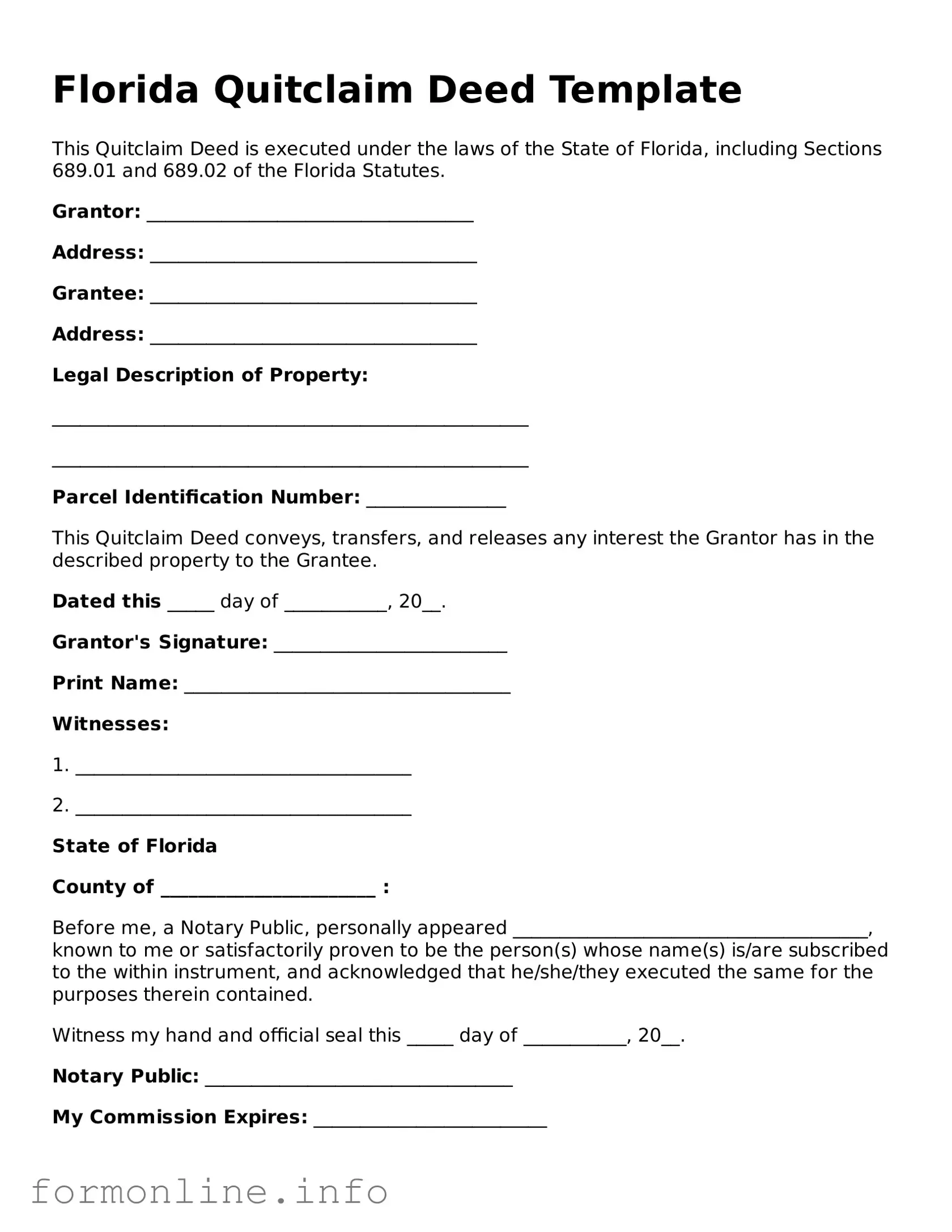Florida Quitclaim Deed Template
This Quitclaim Deed is executed under the laws of the State of Florida, including Sections 689.01 and 689.02 of the Florida Statutes.
Grantor: ___________________________________
Address: ___________________________________
Grantee: ___________________________________
Address: ___________________________________
Legal Description of Property:
___________________________________________________
___________________________________________________
Parcel Identification Number: _______________
This Quitclaim Deed conveys, transfers, and releases any interest the Grantor has in the described property to the Grantee.
Dated this _____ day of ___________, 20__.
Grantor's Signature: _________________________
Print Name: ___________________________________
Witnesses:
1. ____________________________________
2. ____________________________________
State of Florida
County of _______________________ :
Before me, a Notary Public, personally appeared ______________________________________, known to me or satisfactorily proven to be the person(s) whose name(s) is/are subscribed to the within instrument, and acknowledged that he/she/they executed the same for the purposes therein contained.
Witness my hand and official seal this _____ day of ___________, 20__.
Notary Public: _________________________________
My Commission Expires: _________________________
